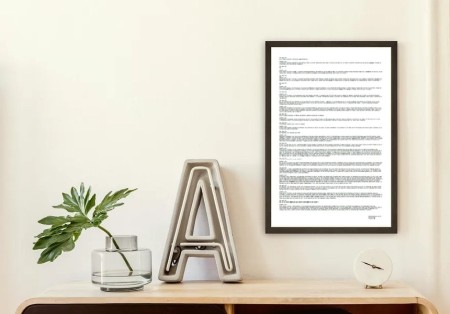Œuvre collaborative – Génération algorithmique (ASCII art), 2025
Création conjointe de Marcel Robert & ChatGPT
D’après La Joconde de Léonard de Vinci
Dans cette version fragmentaire de La Joconde, l’image iconique est déconstruite et reconstruite à l’aide d’un langage informatique élémentaire : l’ASCII. L’œuvre détourne la tradition picturale de la Renaissance à travers le prisme du code, en réduisant les traits énigmatiques de Mona Lisa à des caractères typographiques.
En supprimant la couleur, la matière, et même les nuances, Marcel Robert et ChatGPT interrogent la persistance de la forme et du mystère dans un monde de données. Ce visage qui nous regarde depuis des siècles, réapparaît ici comme une rémanence numérique – instable, vulnérable, mais toujours reconnaissable.
L’œuvre s’inscrit dans une réflexion plus large sur l’intelligence artificielle comme co-auteur, et sur la transformation de notre héritage visuel à l’ère des machines génératives.
____
o8%8888,
o88%8888888.
8'- -:8888b
8' 8888
d8.-=. ,==-.:888b
>8 `~` :`~' d8888
88 ,88888
88b. `-~ ':88888
888b ~==~ .:88888
88888o--:':::8888
`88888| :::' 8888b
8888^^' 8888b
d888 ,%888b.
d88% %%%8--'-.
/88:.__ , _%-' --- -
'''::===..-' = --.
[ASCII Mona Lisa – Fragment Version]
Inspired by Leonardo da Vinci
Reimagined by Marcel Robert & ChatGPT
[ASCII Mona Lisa – Fragment Version]
Inspired by Leonardo da Vinci
Reimagined by Marcel Robert & ChatGPT
Collaborative work – Algorithmic generation (ASCII art), 2025
Joint creation by Marcel Robert & ChatGPT
Based on the Mona Lisa by Leonardo da Vinci
In this fragmentary version of the Mona Lisa, the iconic image is deconstructed and reconstructed using an elementary computer language: ASCII. The work hijacks the Renaissance pictorial tradition through the prism of code, reducing the enigmatic features of the Mona Lisa to typographic characters.
By eliminating colour, matter and even nuance, Marcel Robert and ChatGPT question the persistence of form and mystery in a world of data. This face, which has been watching us for centuries, reappears here like a digital afterglow – unstable, vulnerable, but always recognisable.
The work is part of a wider reflection on artificial intelligence as co-author, and on the transformation of our visual heritage in the age of generative machines.




